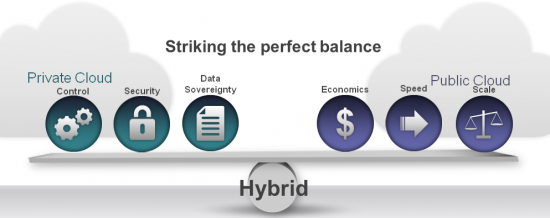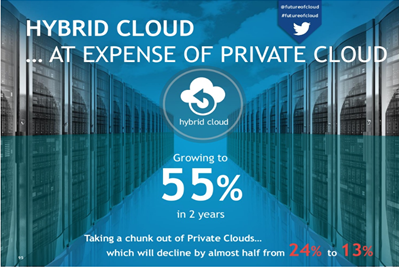































Recently, I had the opportunity to join a discussion regarding the#FutureOfCloud in the#InnovateThink Tweet Chat. One of the questions that came up revolved around the process typically used to associate a workload with a specific cloud deployment model. That is an important question and top of mind whenever we speak with customers.
One of the most appealing qualities of the cloud is the variety of ways in which it can be delivered and consumed. A successful cloud strategy will let you take advantage of a full range of consumption models for cloud services to meet your specific business needs. In reality, when we think about it, the process is very similar to what any company in virtually any industry goes through when shaping its business strategy. For each area of the business, inevitably the question arises: Build, Buy or Partner?
Build versus Buy
When formulating their sourcing strategies, IT organizations repeatedly face very similar service-by-service, "build-versus-buy" decisions. The predisposition of IT organizations is to create and build IT services on their own. That is what many IT professionals want to do ... create new services, invent 'new things'. And that may very well be the best option. However, many customers also realize that it is often beneficial to adopt best-in-class capabilities to remain competitive even if this requires outsourcing select portions of the IT value chain. Hence the emerging role of IT as a broker of IT services that we discussed in the past (for more information please visit our web site.) And this requires a paradigm shift for many IT organizations.
Solving the 'Equation'
To solve the "build versus buy" equation when sourcing their IT services, IT needs to evaluate cost, risk, and agility requirements to determine the best strategy for their business. IT needs a plan and a set of governance principles to evaluate each service based on its strategic profile. A collaborative approach between business and IT is also required. For example: Is the service core to the business? What is the business value associated with it (e.g., strategic importance, sustainable differentiation it can provide, time to market requirements etc..)? What are the cost implications (CapEx vs OpEx), risk profile, security, SLAs, data privacy and regulatory compliance requirements? And ... do you have the expertise to plan, build and manage the new IT service while meeting the expectations of your business counterparts?
Hybrid Cloud Rapidly Emerging as the New 'Normal'
Not surprisingly, my experience when talking to customers that operate in regulated industries or that are concerned about security -and the privacy of their data more specifically -is that they tend to favor private cloud deployments. For example, I was talking to a compliance manager part of a global financial institution and as soon as I uttered 'public cloud' his reaction was quite predictable .... He shook his head, got serious and quipped "Public cloud ... I do not think so ..." Real or perceived, security concerns remain top of mind and a major barrier to cloud adoption, and this is validated by market research data.

The predictability of the application with respect to resource consumption is also a factor. Applications that have high elasticity requirements are well positioned to benefit from the economics, agility and scale that public clouds can offer. Infrastructure capacity planning and optimization is a big task for most IT organizations. Having the ability to burst into the public cloud represents an appealing option. This is also why ultimately hybrid cloud is becoming the new normal, and results of the 2014 North Bridge Future of Cloud Computing Survey supports that view.
 2014 Future of Cloud Computing - Annual Survey Results
2014 Future of Cloud Computing - Annual Survey ResultsThe Power of Choice
Arguably the most important thing your IT organization can do is to diversify its choice of cloud providers ..... Simply because without choice you really do not have a strategy .... And no contingency plans to go along with it ....
What do you think?
Additional Resources:
 Tags quentes :
Nuvem
Hybrid Cloud
private cloud
InterCloud
Nuvem Pública
Cisco Domain Ten
Cisco Cloud strategy
cloud workloads
capacity planning
Tags quentes :
Nuvem
Hybrid Cloud
private cloud
InterCloud
Nuvem Pública
Cisco Domain Ten
Cisco Cloud strategy
cloud workloads
capacity planning